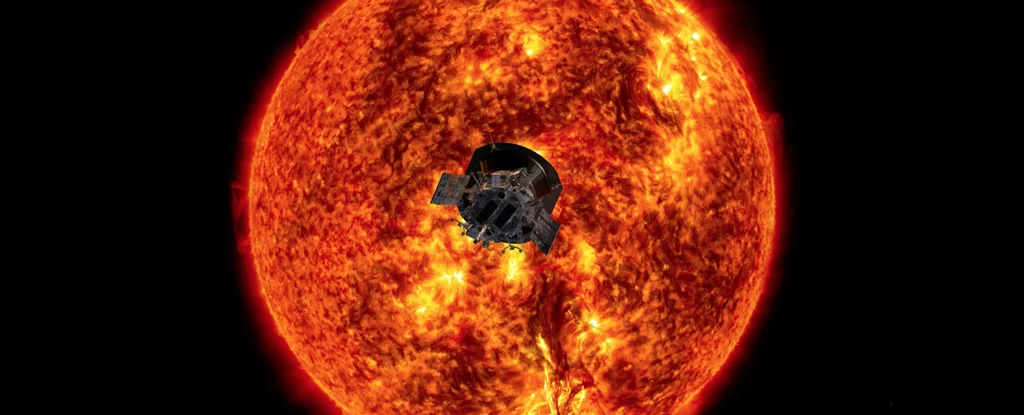Scientists question assumption about slow rotation of ancient stars
- January 4, 2024
- 0
It turns out that stars are much more dynamic than previously thought. As they rotate, they emit a stream of charged particles that are attracted to the star’s
It turns out that stars are much more dynamic than previously thought. As they rotate, they emit a stream of charged particles that are attracted to the star’s

It turns out that stars are much more dynamic than previously thought. As they rotate, they emit a stream of charged particles that are attracted to the star’s strong magnetic fields. This process resembles the opening of a ballerina’s arms, and as soon as the stellar wind becomes magnetically coupled, it begins to slow the star’s rotation. For many years, it was assumed that older stars rotate more slowly; This is a hypothesis that has been at the center of astronomy in recent years.
However, in recent years astronomers have begun to revise this “star ballet” concept. Research has shown that towards the middle of their lives, stars begin to maintain a constant rotation rate for billions of years. Scientists have now begun to investigate how this transition occurs and to put forward a hypothesis that the Sun is preparing for this transition. This discovery will help answer some long-standing mysteries about the Sun and the search for life outside the Solar System.
At first this view met with opposition from astronomers, but with observational data confidence in its accuracy is increasing. The evidence is becoming increasingly convincing and points to gaps in the current understanding of the evolution of stellar magnetic fields over time.
In the 1970s, astronomers discovered that a star’s wind interacts with its magnetic field, slowing the star’s rotation over time; this process was called “magnetic braking”. In 2003, researchers began using this relationship to estimate a star’s age by measuring its rotation. This process was called gyrochronology and became widespread. But all this time scientists assumed that this relationship would hold for stars of all ages, although predictions and observations were confirmed only for stars younger than the Sun.
In 2016, Jennifer van Suders of the University of Hawaii discovered an unexpected feature in the rotation of stars based on data from 21 stars collected by the Kepler space telescope. The stars’ rotation slowed until they reached the current age of the Sun, then stabilized.
“It’s not at all what we expected. Stars fundamentally change their rotations nearly half the time they live,” says Van Suders.
This trend was confirmed after further studies using different techniques and large samples. Scientists now believe that there is a certain speed at which the star’s rotational force is not strong enough to redistribute magnetic energy. This leads to the loss of the ability to create large-scale magnetic fields, as a result of which the star stops slowing down and maintains a constant rotation rate.
New, unpublished research from a team of astronomers contains comprehensive data on the sun-like star 51 Pegasi (51 Pegasi). Researchers used observations from various telescopes to measure the star’s magnetic field and the amount of material ejected. The results showed that the strength of the star’s magnetic field and the amount of material in the wind were much lower than standard models predicted. This shows that it is not possible to determine the age of a star precisely by observing its rotation rate alone.
It was also found that stars can be divided into two categories: those that slow down their rotation and those that do not. The Sun is on the verge of this transition and is experiencing a kind of crisis, losing its stable state. This could explain periodic lulls in the Sun’s magnetic activity that have puzzled astronomers for years.
“The Sun’s inactivity will continue for longer periods of time and become more frequent, until eventually the Sun becomes completely motionless,” says astronomer Travis Metcalfe, one of the authors of the new paper.
Stars are in a quieter state with less radiation and plasma output, creating a more stable and habitable environment for life to emerge. Scientists believe that future space missions could increase the chances of finding habitable planets by focusing their searches on stars beyond this transit. In the future, astronomers plan to study how quickly stars transition into a more stable rotation state and how this affects their magnetic fields. Source
Source: Port Altele
As an experienced journalist and author, Mary has been reporting on the latest news and trends for over 5 years. With a passion for uncovering the stories behind the headlines, Mary has earned a reputation as a trusted voice in the world of journalism. Her writing style is insightful, engaging and thought-provoking, as she takes a deep dive into the most pressing issues of our time.